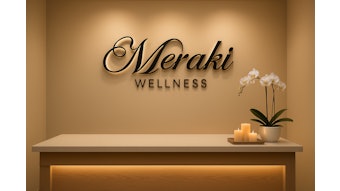
Menopause Is Not a Taboo, It’s a Calling
The conversation around aging is changing, and it’s time our industry changed with it. Menopausal skin is not just “older skin”, it is biologically and functionally different. Estheticians who recognize this and offer thoughtful, effective treatment solutions are positioning themselves at the forefront of a new and essential movement in skin care. Rewriting treatment menus to speak directly to menopausal concerns doesn’t just serve clients, it serves the business. It’s a low-cost, high-impact way to increase the value, filing the books, boosting retail sales and creating lasting relationships with a powerful and growing demographic. Aging doesn’t need to be feared or fought. It needs to be reimagined—with intention, education and a client-first approach that honors the journey and supports the skin every step of the way.
Reframe Aging, A New Approach
In the ever-evolving landscape of professional skin care, one truth remains constant: clients need change, and our services must evolve alongside them. For years, "anti-aging" has been the catch-all category for clients showing signs of skin decline. As the understanding deepens in skin physiology and client behavior, it’s clear that menopause represents a distinct and underserved niche, one that demands more than a generic aging protocol. By adjusting the treatment perspective and reimagining menus to serve menopausal clients more directly, the esthetician not only meets the clients’ concerns, but also creates new opportunities for growth, loyalty and long-term business success.
The Difference Between General Aging and Menopausal Skin
While aging skin is typically associated with fine lines, dehydration and loss of elasticity, menopausal skin presents with deeper, more complex changes triggered by hormonal shifts, primarily the decline of estrogen and progesterone. Estrogen helps maintain collagen, elastin and hyaluronic acid production, all essential for skin density, hydration and firmness. When estrogen levels drop during perimenopause and menopause, the skin can rapidly become thinner, more fragile and prone to increased inflammation, dryness and sensitivity.
Progesterone loss also plays a role, contributing to increased skin dryness and slower cell turnover. As a result, menopausal clients may experience a sudden acceleration in visible aging, including crepey texture, sagging, hyperpigmentation, broken capillaries and a weakened barrier. Importantly, this skin is often highly reactive, meaning that once-standard "anti-aging" treatments may now cause more harm than benefit.
Menopausal Skin = Sensitive Skin
Understanding menopausal skin as a form of sensitive skin is critical to shifting the approach. This specific demographic may have never experienced sensitivity before, yet now finds their skin flushed, stinging, irritated or unable to tolerate previously used products and services. Hormonal fluctuations can create inflammatory responses, reduce the skin’s ability to retain moisture and impair barrier function, making sensitivity a new and frustrating norm for these clients.
Treating menopausal skin effectively means shifting away from aggressive modalities and harsh ingredients, and toward barrier-repairing, hydrating and calming protocols. This allows estheticians to deliver visible results while protecting delicate skin from further damage.
What Estheticians See in the Treatment Room
Estheticians working with menopausal clients often notice a variety of skin conditions that may include:
- Loss of firmness and volume, particularly in the lower face, neck and jawline
- Deepening of nasolabial folds, marionette lines and crow’s feet
- Increased dryness or rough texture
- Rosacea-like flushing or new onset sensitivity
- Post-inflammatory hyperpigmentation from past treatments
- Breakouts in the chin and jawline from hormonal imbalances
- Slower healing and reduced response to aggressive treatments
Recognizing these signs allows estheticians to guide clients into a supportive treatment plan that honors the skin's current needs, without over-promising or overwhelming.
The New Demographic: A Growing Opportunity
The demographic of menopausal clients is expanding rapidly. Women aged 45–65 now represent a major consumer group with both the interest in self-care and the spending power to invest in advanced skin care. They’re educated, loyal and looking for professionals who understand their skin's specific changes and can offer safe, effective treatments and home care.
Unfortunately, many estheticians and spas still rely on outdated anti-aging language and one-size-fits-all protocols. This leaves menopausal women feeling unseen and underserved. By positioning the business as a resource for menopausal skin, it stands out from competitors and attracts a niche audience that’s eager for personalized care.
Rethinking the Menu Without Reinventing the Back Bar
One of the biggest misconceptions is that a whole new product line or menu is needed to appeal to menopausal clients. The tools are likely already available, and the service menu just needs to be reframed and refocused.
By renaming and rewriting the existing aging-focused treatments to address menopausal concerns like barrier repair, hydration, inflammation and skin thinning, estheticians can create services that feel customized without overhauling an entire backbar or adding product lines. For example:
- Change "Firming Anti-Aging Facial" to "Hormonal Skin Renewal Facial"
- Replace "Anti-Aging Peel" with "Brightening Enzyme Therapy for Menopausal Skin"
- Offer "Neck & Jawline Rejuvenation for Menopausal Clients" instead of “Neck Lift Facial”
This approach allows estheticians to maintain the current back bar while increasing relevance, sales potential and client interest. It’s a simple, strategic shift that adds value without additional expense.
Treatment Packages and Long-Term Clientele
Menopausal skin benefits mostly from consistency, gentle progress and a partnership-focused approach. Clients at this life stage are not looking for one-time fixes, they want long-term solutions from a trusted provider. Expanding the treatment menu to include supportive services like barrier-repairing facials, monthly enzyme or peptide treatments, LED therapy and hydrating add-ons allows one to build a results-driven treatment plan that evolves with their skin. These services can be offered as part of a structured treatment series or bundles, paired with take-home skin care kits to reinforce outcomes and elevate retail sales. Bringing in specialized retail products designed for sensitive, hormonal and aging skin not only improves results but positions the retail area as a targeted solution center. Adding these options to existing services makes implementation easy and increases the perceived value of the services. By packaging treatments with curated home care and offering educational support along the way, client trust is fostered, improves visible results and builds lasting loyalty that fuels consistent revenue growth.
The Power of Client Loyalty and Relationship Building
When the unique needs of menopausal clients are met with empathy, knowledge and results, the esthetician will build loyalty that lasts. These clients are likely to return regularly, refer to friends and purchase full home care routines when they feel seen and supported.
Offer personalized check-ins, routine follow-ups and treatment plans that evolve with the skin’s needs. Make the space feel safe, informative and empowering—this age group values meaningful relationships with their providers and often becomes the most vocal advocates.
Refreshing the Spa Approach: Repositioning for Profit
Making a few simple changes in the spa can completely transform the client base. Updating treatment names, rewriting menu descriptions to reflect targeted skin concerns like menopausal changes and bundling retail kits with treatments creates a more personalized, results-driven experience that speaks directly to a niche audience. Shifting social media messaging and marketing materials to highlight these specialized services helps establish the brand as the go-to for menopausal skin health. By focusing on one consistent stream of clientele, such as menopausal women, the business becomes easier to manage, more profitable and less reliant on broad “anti-aging” claims that saturate the industry. This refresh not only sets the esthetician apart from every other spa offering generic aging facials, but it also reinvigorates business, attracts a loyal new demographic and positions the spa as both relevant and forward-thinking.
Increasing Revenue Without Increasing Overhead
Refocusing treatment menus toward menopausal clients is a financially smart move. There is no need to buy new devices or introduce invasive treatments. By slightly adjusting the language, education and marketing approach, offering high-value services using the products that are already available.
Consider this:
- Higher frequency of visits = consistent service revenue
- Customized treatment plans = stronger client commitment
- Home care sales = increased retail revenue
- Word-of-mouth referrals = low-cost marketing
Menopausal clients are motivated by results and trust, they tend to purchase full homecare routines and rebook regularly. In an industry where client retention is gold, this is a niche worth pursuing.










